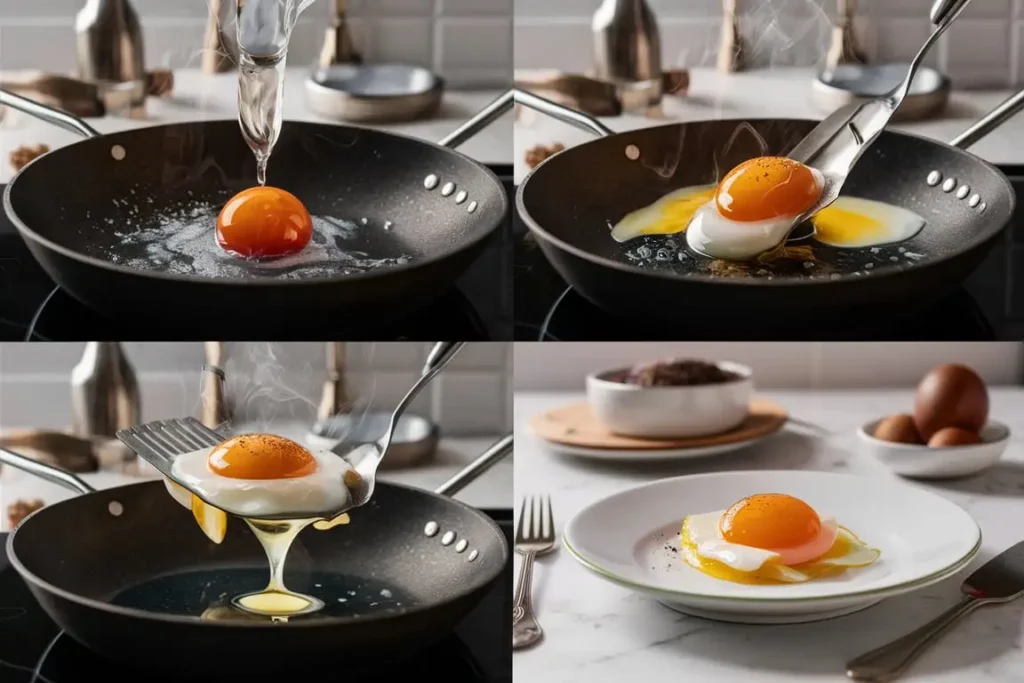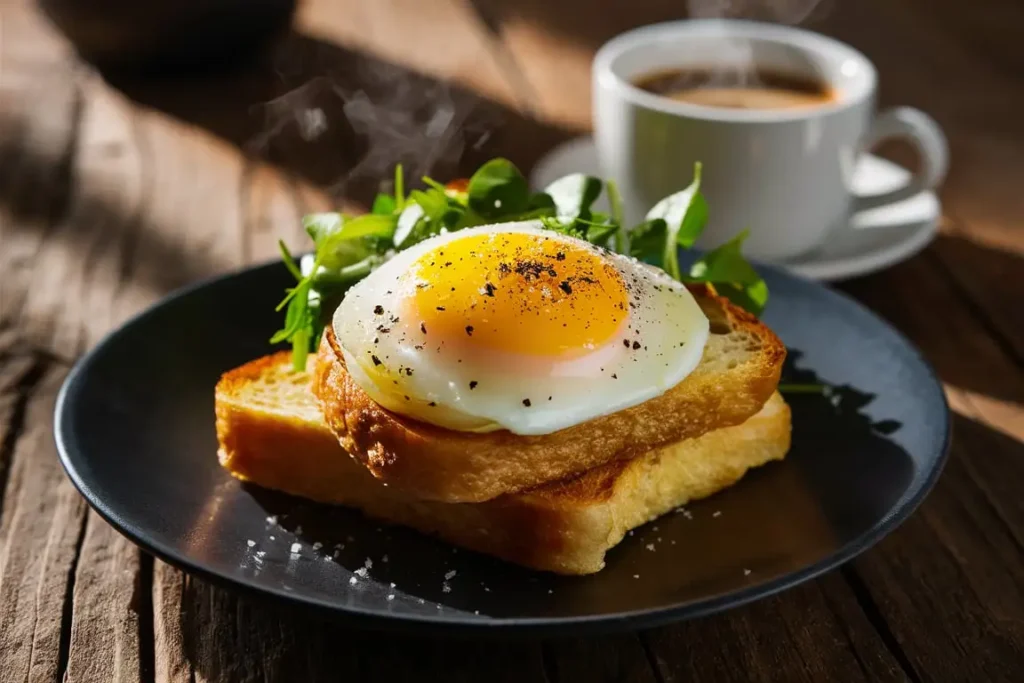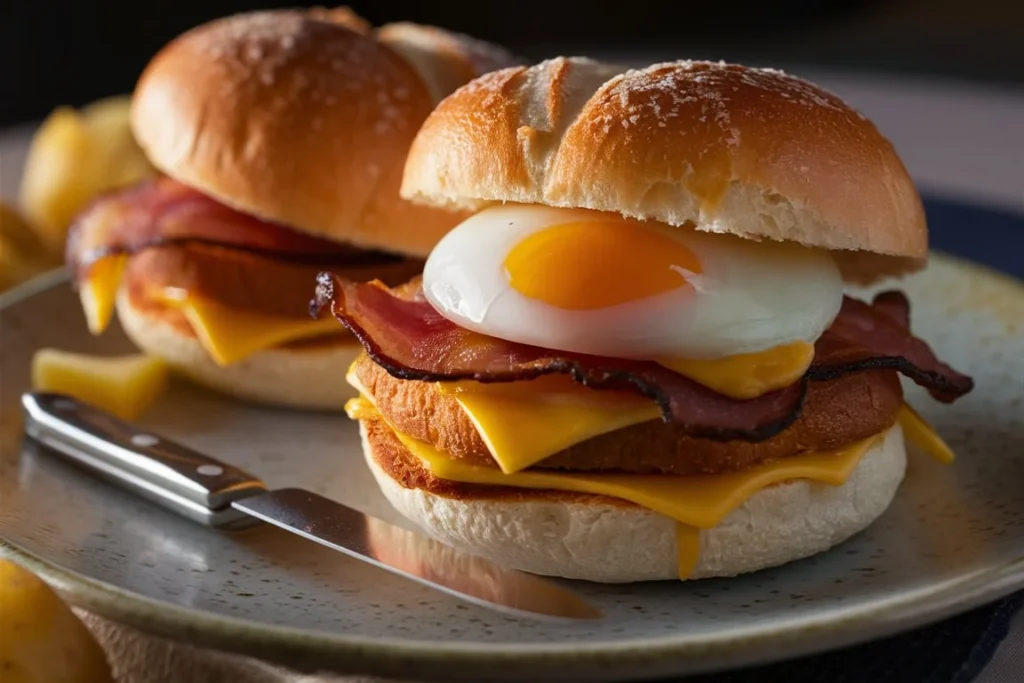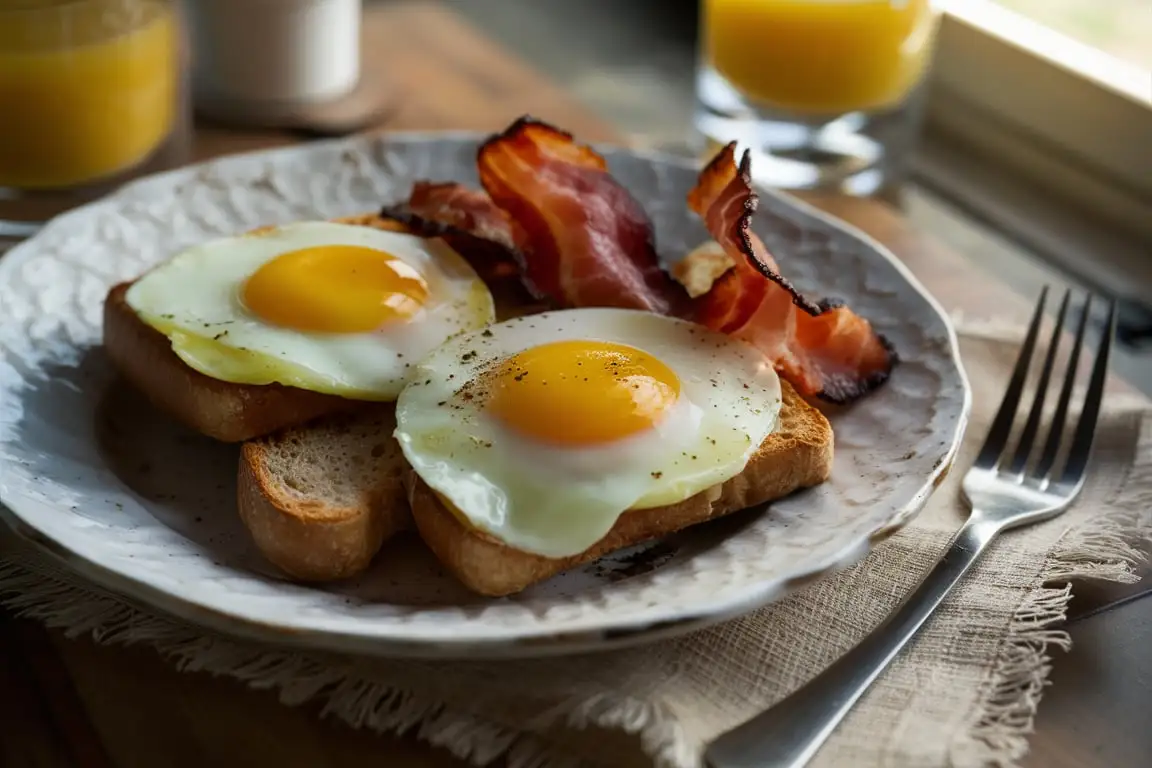Eggs are a staple in breakfast culture worldwide, and one of the most popular yet underrated styles is over hard eggs. Whether you’re new to cooking eggs or looking to perfect your technique, this guide will teach you everything about over hard eggs what they are, why they’re great, and exactly how to cook them.
Table of Contents
What Are Over Hard Eggs?
Over hard eggs are fried eggs where both the whites and yolks are fully cooked. Unlike other egg styles where the yolk remains runny or slightly soft, over hard eggs have a firm, fully set yolk. They are perfect for those who enjoy a solid texture without any liquid center.
Understanding Egg Doneness Levels
Eggs can be cooked to different degrees of doneness based on personal preference. Here’s a quick breakdown of the common fried egg styles:

- Sunny-Side Up: The egg is fried without flipping, leaving the yolk completely runny.
- Over Easy: The egg is flipped briefly, but the yolk remains very runny.
- Over Medium: The yolk is partially cooked but still slightly soft inside.
- Over Hard: The yolk is fully cooked and firm.
How Over Hard Eggs Differ from Other Egg Styles
The biggest difference between over hard egg and other styles is the yolk texture. In over easy and over medium eggs, the yolk retains some liquid consistency, making them ideal for dipping toast or mixing into other dishes. Over hard eggs, on the other hand, offer a firmer, more structured texture that holds its shape well in sandwiches, burgers, and wraps.
Why Choose Over Hard Eggs?
You might be wondering why choose over hard eggs over other styles? Here are a few reasons why many people prefer them:
Nutritional Benefits of Over Hard Eggs
Eggs are a nutritional powerhouse, and over hard egg are no exception. They provide:
- High-quality protein: Each egg contains about 6 grams of protein, essential for muscle growth and repair.
- Healthy fats: Despite being fully cooked, eggs retain their healthy unsaturated fats.
- Essential vitamins & minerals: Eggs are packed with Vitamin B12, Vitamin D, iron, and choline, supporting brain function and metabolism.
One advantage of fully cooked yolks is that they eliminate any concerns about raw egg consumption, making them a safer option for certain diets.
Who Should Eat Over Hard Eggs? (Dietary Preferences & Restrictions)
Over hard egg are an excellent choice for:
- Pregnant women – Since fully cooked eggs pose no risk of salmonella, they are safer than runny yolks.
- People with weakened immune systems – Those with compromised immune systems can enjoy eggs worry-free.
- Those who dislike runny yolks – Many people simply prefer the texture of fully set yolks.
- Athletes & fitness enthusiasts – Over hard eggs make a great high-protein breakfast for muscle building.
How to Cook Over Hard Eggs: Step-by-Step Guide
Now that you know why over hard egg are a great option, let’s dive into how to cook them perfectly.

Essential Ingredients and Tools
Before you start cooking, gather these essentials:
Ingredients:
- Eggs – Fresh, high-quality eggs work best.
- Butter or oil – Butter gives a rich flavor, while olive oil or avocado oil is a healthier alternative.
- Salt and pepper – For seasoning.
Tools:
- Nonstick skillet or cast iron pan – Prevents sticking and ensures even cooking.
- Spatula – A flexible spatula helps flip eggs without breaking them.
- Lid (optional) – Can be used to steam the eggs for even cooking.
Cooking Over Hard Eggs on the Stovetop
Follow these simple steps to achieve the perfect over hard eggs:
Step 1: Heat the Pan
- Place a nonstick or cast iron skillet over medium heat.
- Add 1 teaspoon of butter or oil and let it melt, coating the pan evenly.
Step 2: Crack the Egg
- Carefully crack the egg into the pan without breaking the yolk.
- Tip: Crack the egg on a flat surface rather than the edge of the pan to prevent shell fragments.
Step 3: Cook Until Whites Are Set
- Allow the egg to cook undisturbed for 2–3 minutes, until the whites are opaque and no longer runny.
Step 4: Flip the Egg
- Using a spatula, gently flip the egg.
- Tip: Tilt the pan slightly while flipping to avoid breaking the yolk.
Step 5: Cook Until Yolk is Firm
- Let the egg cook for another 2 minutes until the yolk is fully cooked through.
- If needed, press gently on the yolk with the spatula to check for firmness.
Step 6: Serve Immediately
- Remove from the pan and season with salt and pepper.
- Enjoy as-is or use in a sandwich, burger, or breakfast plate.
Alternative Cooking Methods (Oven, Air Fryer)
While the stovetop is the most common method, you can also cook over hard eggs using alternative techniques:
Baking in the Oven
- Preheat oven to 350°F (175°C).
- Lightly grease a muffin tin or a baking sheet.
- Crack eggs into the tin and bake for 10–12 minutes, or until fully set.
Air Fryer Method
- Preheat air fryer to 350°F.
- Grease a small ramekin or oven-safe dish.
- Crack the egg into the dish and cook for 6–8 minutes, checking for doneness.
These methods are hands-free and work well if you’re cooking multiple eggs at once.
Tips for Achieving the Perfect Over Hard Egg
Mastering over hard eggs requires a few key techniques to get the best texture and flavor. Here are some expert tips to ensure your eggs turn out perfectly firm yet tender every time.
Choosing the Right Pan and Utensils
- Use a nonstick skillet – Prevents eggs from sticking and makes flipping easier.
- A well-seasoned cast iron pan works too – If properly maintained, it can provide a great crispy texture.
- A thin, flexible spatula – Helps flip eggs smoothly without breaking the yolk.
Managing Heat for Best Results
- Medium heat is best – Too high, and the whites burn before the yolk is fully set.
- Preheat the pan properly – Cold pans cause uneven cooking.
- Covering the pan can help – A lid traps heat and cooks the egg more evenly.
How to Keep the Whites Tender and Yolks Firm
- Don’t flip too soon – Let the whites set completely before flipping.
- Avoid pressing the yolk too much – Light pressure ensures even cooking without drying out the egg.
- Butter adds moisture – Prevents the whites from turning rubbery.
Delicious Ways to Serve Over Hard Eggs
Over hard eggs are versatile and can be enjoyed in various ways. Here are some delicious serving ideas:

Over Hard Eggs in Breakfast Plates
Pair your eggs with classic breakfast staples:
- Bacon or sausage – The saltiness complements the firm yolk.
- Hash browns or roasted potatoes – A hearty, crispy side.
- Toast or English muffins – Ideal for stacking eggs on top.
Pairing with Toast, Meats, and Veggies
- Avocado toast – Add slices of over hard egg for extra protein.
- Grilled vegetables – Zucchini, spinach, or mushrooms pair beautifully.
- Smoked salmon – A gourmet twist with a rich, savory flavor.
Using Over Hard Eggs in Sandwiches & Burgers
- Breakfast sandwiches – Stack eggs with cheese, ham, and a bagel.
- Burgers – A well-cooked egg makes a great burger topping.
- Wraps and burritos – Chop the egg and mix with veggies and salsa.

Frequently Asked Questions (FAQs)
How long should I cook over hard eggs?
It takes 4–5 minutes total. Cook for 2–3 minutes on one side, then 2 minutes after flipping.
Can I make over hard eggs without flipping them?
Yes! Covering the pan with a lid helps steam the egg and fully cook the yolk without flipping.
Are over hard eggs healthier than other styles?
Yes, they are as healthy as other eggs, providing protein, vitamins, and minerals. However, they lose some nutrients due to longer cooking.
How do I prevent overcooked rubbery eggs?
- Use medium heat (not high).
- Don’t overcook 2 minutes per side is enough.
- Add butter or oil to keep the whites tender.
What’s the best oil or butter for cooking over hard eggs?
- Butter – Adds a rich flavor.
- Olive oil – A heart-healthy option.
- Avocado oil – Ideal for high-heat cooking.
Conclusion: Mastering the Perfect Over Hard Egg
Over hard eggs may not get as much attention as runnier styles, but they are delicious, nutritious, and easy to make. With the right technique, they can be cooked to perfection firm but not dry, flavorful but not greasy. Whether you enjoy them for breakfast, in a sandwich, or on top of a burger, mastering this simple cooking skill will elevate your meals.
Now that you know all the secrets to cooking over hard eggs, it’s time to grab your skillet and try it out yourself!

